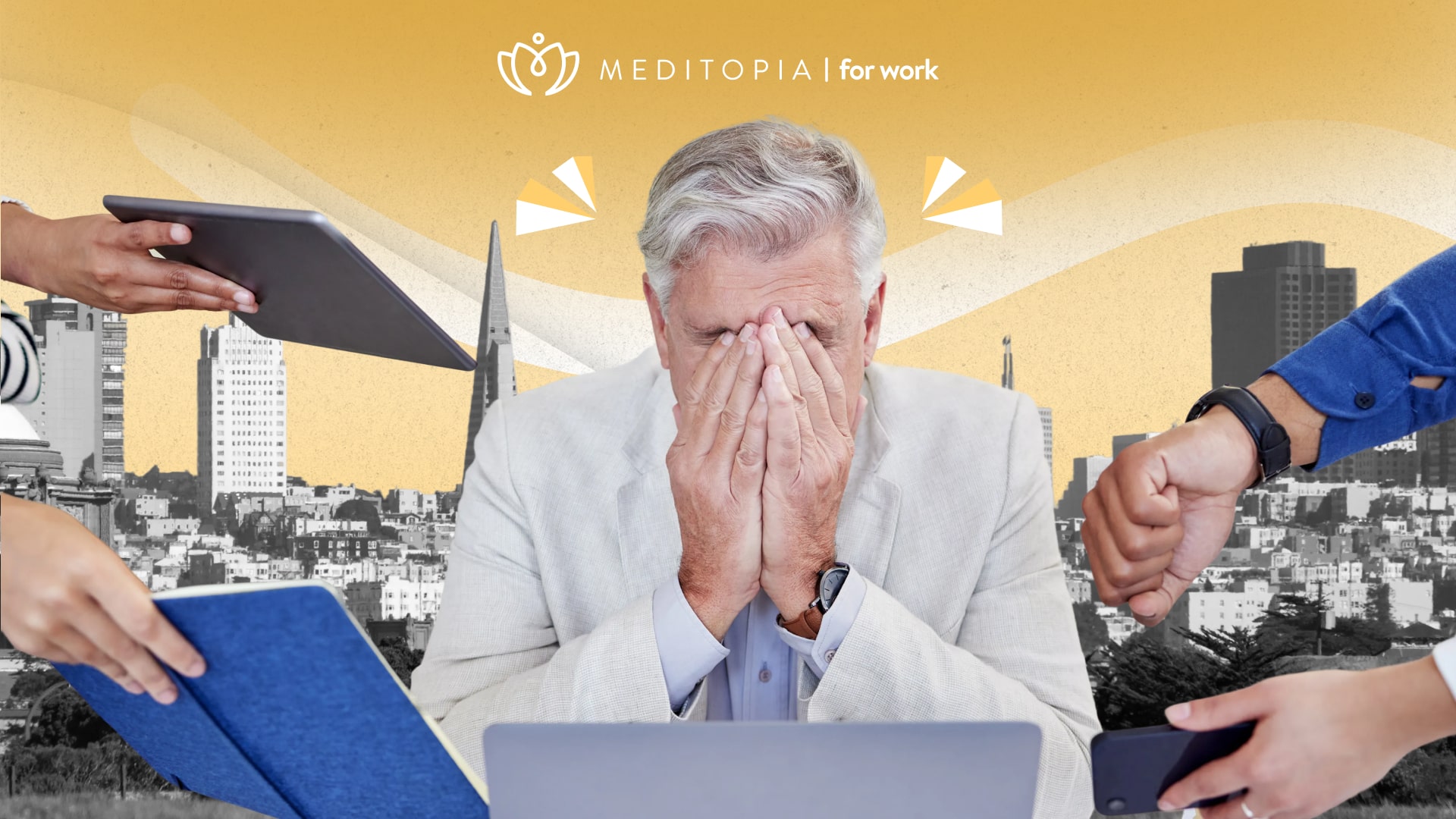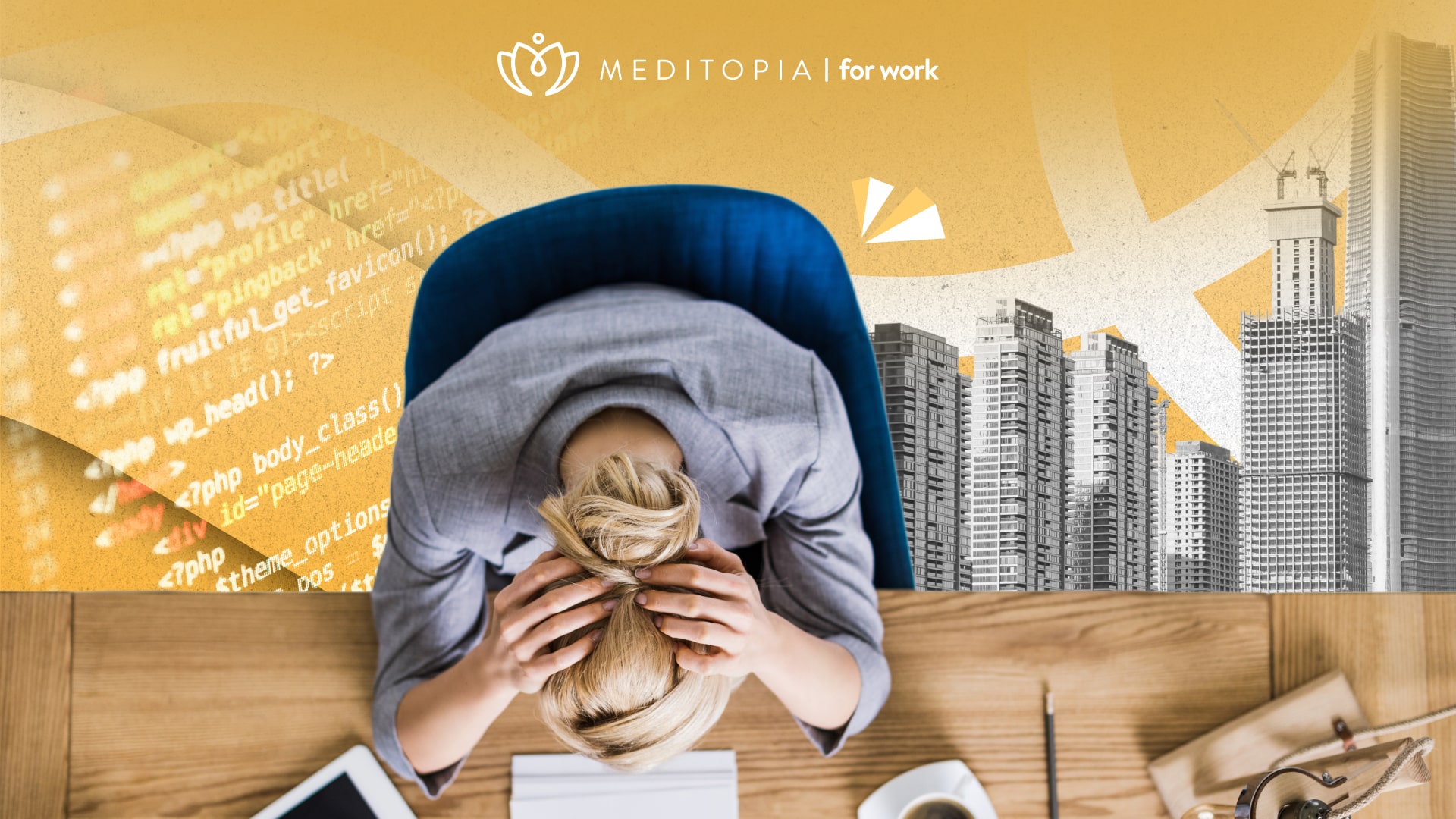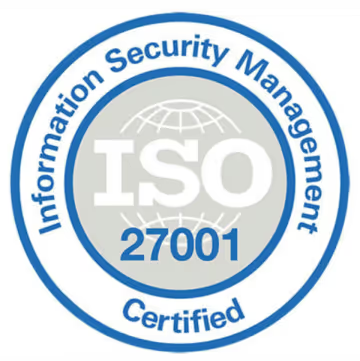The WHO estimates that 15% of working-age adults live with a mental disorder and that depression and anxiety cost the global economy around US$1 trillion per year in lost productivity [1]. Employee Assistance Programs can change the game for many organizations, but which EAP type is the best for yours? Let's discover it together.
Why EAPs Are Essential for Today’s Workforce
Workforces today are under pressure from multiple directions: rising living costs, uncertainty, burnout, AI integration, and constant change.
Recent data shows that around 84% of employees faced at least one mental health challenge in the last year, including stress, burnout, or low motivation [2]. These realities have made workplace wellbeing initiatives a strategic priority rather than an HR side project.
For HR, people leaders, and founders, well-designed EAP programmes can:
- Provide early EAP mental health support before challenges turn into crises, absences, or resignations.
- Offer confidential employee support, so people can ask for help without fear of stigma or impact on their career.
- Complement existing workplace counseling programs, medical insurance, and occupational health services.
- Support hybrid employee wellbeing with access for remote, on-site, and global teams.
- Deliver measurable value: research shows EAPs can reduce absenteeism, injury rates, and productivity losses, with ROI estimates ranging from $3 to $10 for every $1 invested [3].
Employee Assistance Programs yield tangible benefits, but there's a catch: to move from low-usage and reactive support, to high engagement and proactive initiatives. That's what the modern EAP model is about.
Common Types of Employee Assistance Programs
Now, there are several types of EAPs you can implement, depending on your size, industry, workforce distribution, and budget. At a high level, most models fall into one of these categories: Internal (in-house), external (outsourced), hybrid, digital, or industry-specific.
Below is an overview of common types, what they look like in practice, and when they fit best, it can support your EAP provider comparison and help you shortlist realistic options.
1. In-House EAP
- Delivered by an internal HR, wellbeing, or occupational health team.
- Often includes internal psychologists, coaches, or social workers plus referrals to external specialists.
- Works best where there is enough scale to justify dedicated staff and infrastructure (e.g., large enterprises, public sector, hospitals).
Key advantages
- Strong alignment with culture, policies, and existing workplace counseling programs.
- Easier integration with internal workplace wellbeing initiatives (L&D, DEI, health & safety).
2. Outsourced EAP (External)
- Provided by an external third-party EAP vendor.
- Common in small and mid-sized businesses that lack the resources to run an in-house program.
- Usually offers phone, video, or in-person counseling plus referral services.
Key advantages
- Professional, specialized support without large fixed costs.
- Clear boundaries that can increase perceived confidentiality among employees.
3. Hybrid EAP
- Combines internal resources (e.g., HR, on-site counselors) with external partners (e.g., specialist trauma services, digital apps).
- Popular in larger or multinational organizations modernizing legacy programs towards digital EAP solutions.
Key advantages
- Flexibility to mix global standards with local adaptations.
- Easier to add new services (e.g., manager training, financial coaching) without rebuilding the whole program.
4. Digital EAP
- Delivered primarily through an app or web platform, often part of broader employee wellbeing platforms.
- Provides on-demand access to self-guided content, chat or video with professionals, and 24/7 support.
- Ideal for distributed, shift-based, or global teams that need help outside office hours.
Key advantages
- Scales quickly across countries, languages, and time zones.
- Allows continuous, proactive mental health care through nudges, content, and early-warning analytics.
5. Industry-Specific EAP
- Tailored examples of employee assistance programs designed for specific sectors such as healthcare, first responders, manufacturing, or financial services. ResearchGate
- Focus on job-specific risks (trauma, safety incidents, ethical pressure, vicarious stress).
Key advantages
- Better fit for unique risk profiles and regulatory requirements.
- Higher credibility when providers understand the realities of the job.
Are you inthe healthcare or retail industry? Some other challenges regarding the industry you could consider:
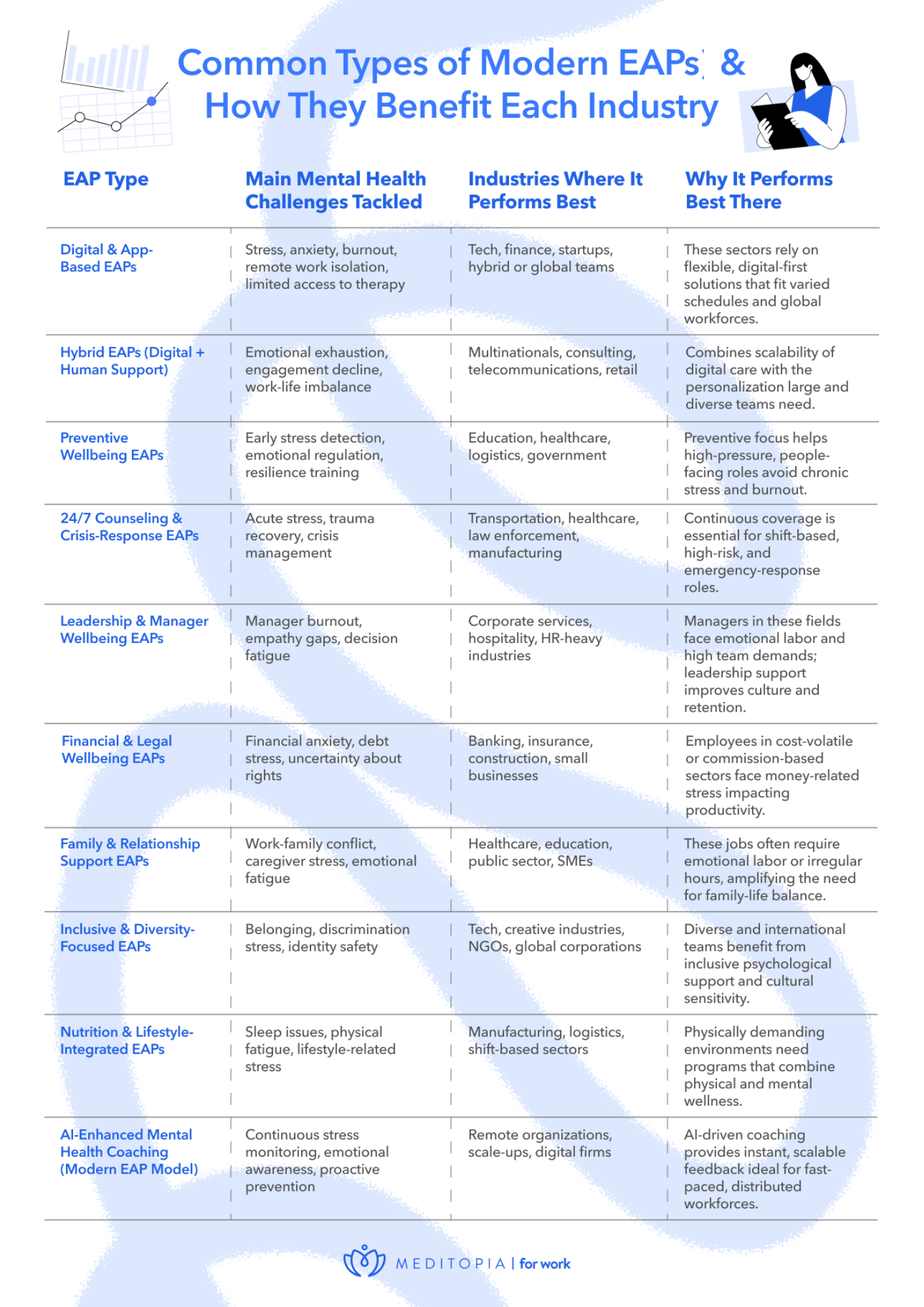
Modern Digital EAPs: The Next Evolution
Did you know? Traditional EAP hotlines were designed for a 9-to-5, office-based world, and their low usage reflects that.
Studies now show that many EAPs still see engagement rates below 10%, partly because:
- Support is reactive
- Limited to office hours
- Delivered via phone only
- Companies do not have support in crafting compelling and up to date benefits communication plans.
Essentially, modern EAP offerings use technology, analytics, and human expertise to remove these barriers. Meditopia for Work belongs to this new generation of digital EAP solutions, and it combines:
- 24/7 multilingual access via app, chat, and video, which is crucial when most digital peer-support interactions happen outside business hours.
- Integrated content for EAP mental health support, physical health, nutrition, and mindfulness to support the whole person.
- Self-guided resources to empower and tackle challenges when the person needs to, whether at work or home.
- 1:1 expert sessions with psychologists, therapists, coaches, dietitians, financial advisors, and more.
- Access to gym facilities, personal trainers, and low impact exercises to reduce sedentarism and increase the community feeling.
- Dashboards that show anonymized trends (e.g., stress levels, top topics, etc.) to inform and detect broader preventive actions.
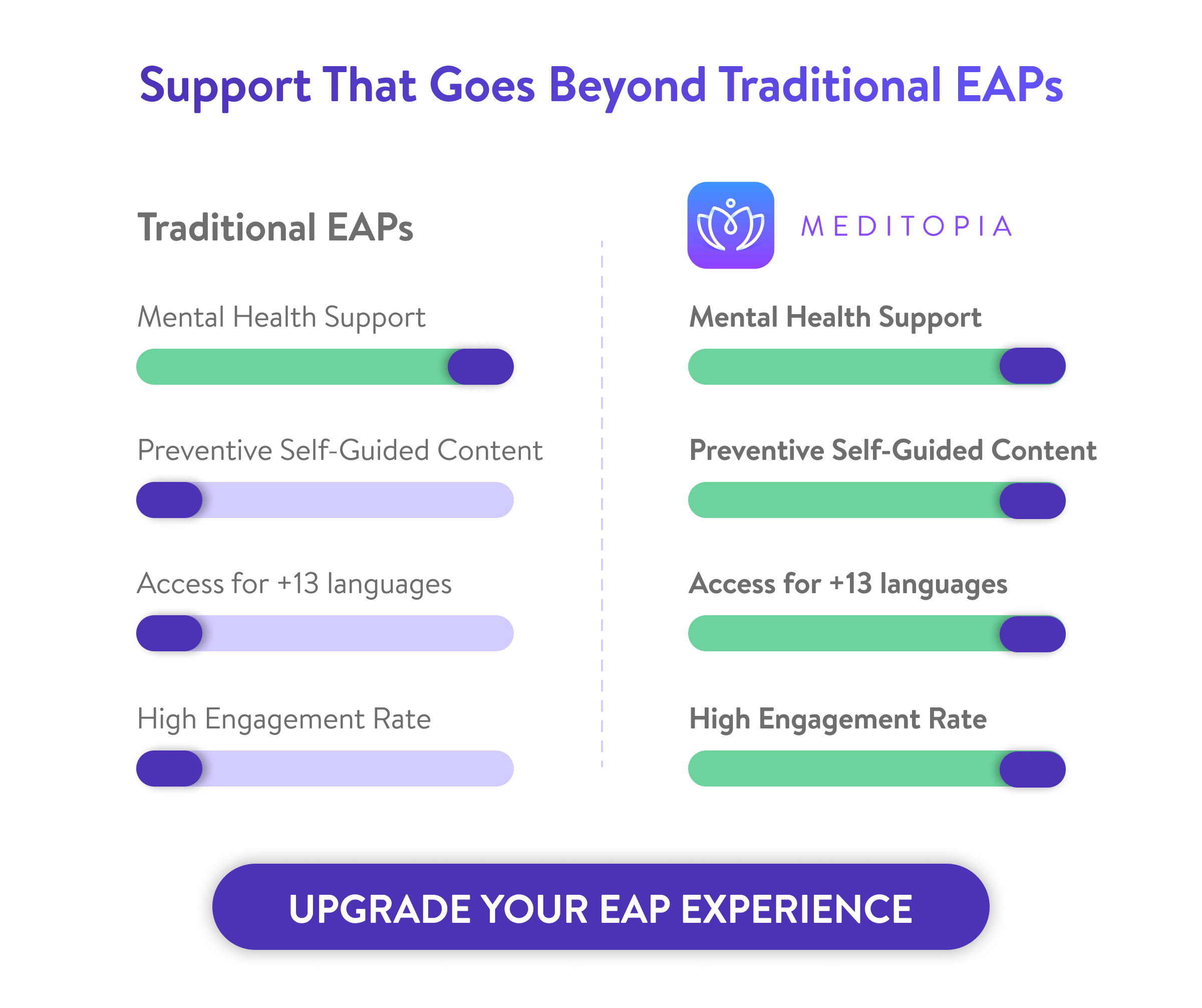
To understand the shift, it’s useful to compare classic vs modern EAP model features. Consider if your team needs broader support, or specific actions:
Employee Assistance Program Examples by Focus Area
Beyond delivery model, you’ll also find examples of employee assistance programs that specialize in particular needs. Many organizations combine several of these focus areas within a single EAP or across different vendors.
Below are high-level examples, grouped by what they primarily support:
- Mental Health EAPs
- Focus: counseling, therapy, crisis support, stress and burnout management.
- Services: short- and long-term therapy, CBT-based programs, group support, relapse prevention.
- Financial EAPs
- Focus: budgeting, debt management, emergency savings, financial literacy.
- Services: 1:1 financial coaching, workshops, tools for emergency savings or student loan support.
- Legal EAPs
- Focus: legal information and consultation related to family, housing, employment, or consumer issues.
- Services: phone consultations, document review, referrals to vetted legal professionals.
- Work–Life Balance EAPs
- Focus: family care, elder care, parenting, relationship counseling, and daily-life logistics.
- Services: care navigation, coaching for carers, relationship counseling, resource directories.
- Career & Performance EAPs
- Focus: coaching, upskilling, confidence, and motivation in the workplace.
- Services: leadership coaching, performance-anxiety support, return-to-work programs, career planning.
How to Choose the Right EAP for Your Company
Selecting an EAP is ultimately a strategic decision. The right fit depends on your workforce profile, existing benefits, and how you want to shape culture and retention in the next 3–5 years. Here’s a practical decision framework for HR and leadership teams.
- Map your needs clearly
- What problems are most visible today, burnout, absence, stress claims, safety incidents, turnover, or performance issues?
- Which groups are most at risk (frontline staff, managers, new hires, parents, specific regions)?
- Assess delivery model fit
- Smaller organizations may start with an external outsourced program or directly with a modern platform like Meditopia.
- Larger enterprises can review whether their in-house or hybrid model still meets expectations or if they need to modernize.
- Compare traditional vs digital EAP providers
- Evaluate how each vendor handles access (24/7 vs office hours), channels (phone only vs app/chat/video), and scope (therapy only vs broader wellbeing).
- Look for strong data privacy practices and truly confidential employee support, especially in cultures where stigma is still high.
- Check accessibility and inclusivity
- Languages, time zones, mobile access, and accessibility features (e.g., captions, text-only options).
- Fit for remote, hybrid, and onsite employees to support proactive mental health care across your locations.
- Demand measurable outcomes
- Ask prospective providers how they measure reductions in absenteeism, improvements in wellbeing, or program ROI.
- Ensure they provide regular, anonymized reporting that links back to your strategic wellbeing initiatives.
- Align with culture and leadership
- The best EAPs don’t operate in isolation; they connect to manager training, psychological safety, and leadership behaviours.
- Include senior leaders and line managers in launch and communication so the program is seen as a core part of how you care for people.


.jpg)




%2008.07.36_4ffe9739.jpg)
